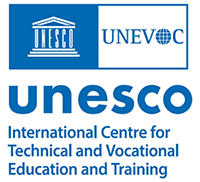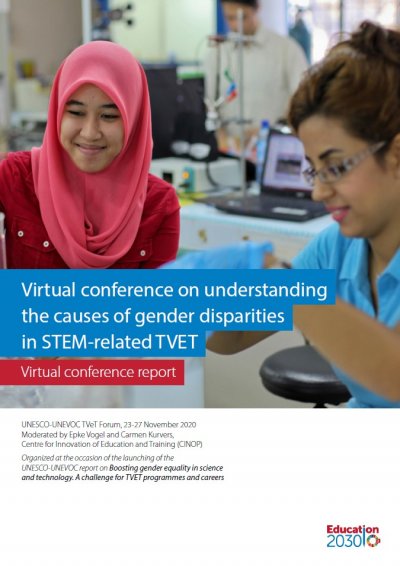
The UNESCO-UNEVOC International Centre: Who We Are | What We Do | Working With Us | Get in Touch
The UNEVOC Network: Learn About the Network | UNEVOC Network Directory
For Members: UNEVOC Centre Dashboard
Thematic Areas: Inclusion and Youth | Digital Transformation | Private Sector Engagement | SDGs and Greening TVET
Our Key Programmes & Projects: BILT: Bridging Innovation and Learning in TVET | Building TVET resilience | TVET Leadership Programme | WYSD: World Youth Skills Day
Past Activities: COVID-19 response | i-hubs project | TVET Global Forums | Virtual Conferences | YEM Knowledge Portal
Our Services & Resources: Publications | TVET Forum | TVET Country Profiles | TVETipedia Glossary | Innovative and Promising Practices | Toolkits for TVET Providers | Entrepreneurial Learning Guide
Events: Major TVET Events | UNEVOC Network News

| Author/s: | CINOP; UNESCO-UNEVOC |
| Publisher/s: | UNESCO-UNEVOC |
| Published: | 2020 |
| Licence: | CC BY-SA |
Science, technology, engineering and mathematics (STEM)-related technical and vocational education and training (TVET) has a potentially significant role to play in providing the skills and competencies required to support innovation, productivity and international competitiveness as well as areas of social development including health and education.
Even as STEM subjects and skills are becoming more essential in today’s world, gender disparities are prevalent in these fields. In recent years, much has been done to help inspire girls and women to study and work in technical fields. Yet long-standing biases and gender stereotypes are steering girls and women away from STEM-related fields, which means that a large pool of potential skills that could contribute to economic development remains untapped.
Recognizing the gap in TVET-specific data and literature, UNESCO-UNEVOC conducted a study on Boosting gender equality in science and technology. A challenge for TVET programmes and careers throughout 2019 and 2020. The virtual conference was organized at the occasion of the launching of the study report that reviewed available evidence of the situation faced by girls and women in STEM-related TVET.